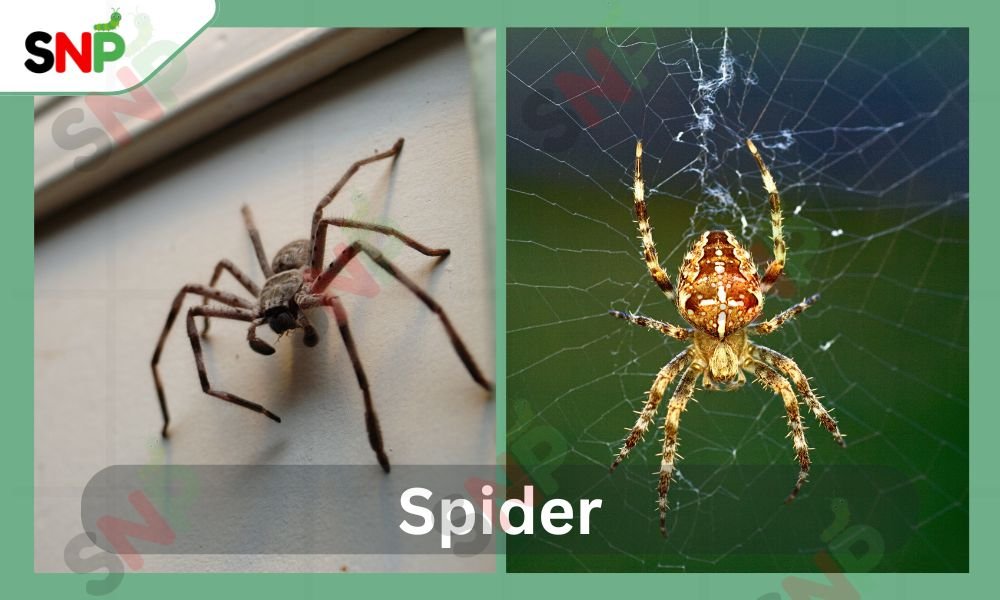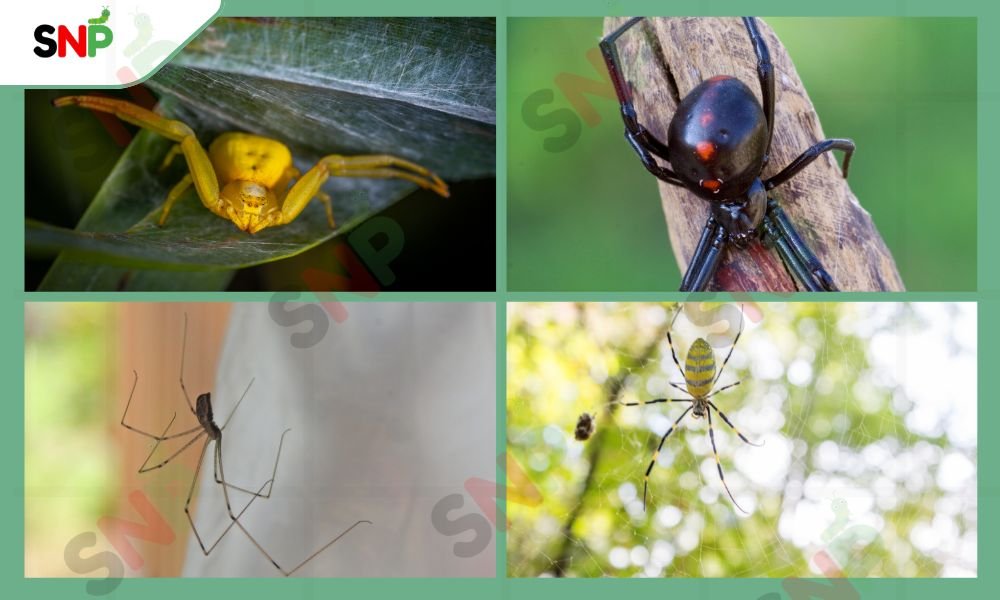How to Keep Spiders Out of Your House

Spiders may be small, but they know how to make a Haunted entrance, usually when you least expect it, like relaxing during a midnight snack run or a Calm shower. While most of these eight-legged, unwanted guests are harmless (and surprisingly sometimes helpful in controlling other pests), their sudden appearances can trigger high jumps. If you’ve ever searched how to keep spiders out of your house, you’re not single —and luckily, you’re in the right spot. From the infamous black widow to the lightning-fast wolf spider, these creepy crawlers have a knack for turning peaceful corners into spider Web. But fear not! We have tips, tricks, and spider-stopping secrets to help you reclaim your home. So grab your coffee and let’s spin a web of knowledge that keeps the spiders outside—where they belong.
Spiders in the United States and Their Impact

Households across the United States frequently encounter spiders as residents see them in their homes. The hunting abilities of these Tiny crawlers make them important in pest control operations, though their appearance often causes fear among human observers. Spiders create a double problem for homeowners since they are visually displeasing and they present a health danger, specifically through venomous species including the black widow and brown recluse. A spider web in the corner or an unexpected eight-legged being are the things that can quickly change the feeling of comfort into worry. Because spiders are looking for shelter during the winter, that is a time when humans should know how to prevent such situations, and therefore, the question of how to keep spiders out of your house is very important as it will make your living environment safe and convenient.
Types of Spiders Found in the United States
Spiders, in general, are not the most popular animal, to say the least, but the US has approximately 3,500 species of them. Nonetheless, only a fraction of these species end up in human dwellings, or do they pose any hazard? Here are the most remarkable types of spiders:
1 House Spiders
These are the spiders we notice the most, as they are frequently found inside our houses. They are usually yellowish-brown with long abdomens and create an untidy Spider web in dark areas.
2 Black Widow Spiders
One cannot fail to recognize an ordinary-looking shiny black body with a red hourglass mark, and this is a black widow Spider. They live throughout most US regions, but you’ll find them more in the South. Their bite can cause some nasty symptoms, but fatalities are very unlikely.
3 Brown Recluse Spider
Medium-sized, unicolored brown, and a medium-sized violin-shaped mark are the characteristics of brown recluses. They mainly live in the southern and central US. Their bites can cause severe skin damage.
4 Wolf Spiders
Wolf spiders are scary-looking creatures with large bodies and a lot of hair. These wolf spiders mostly don’t build a Spider web and are quick to attack on their victims. Sometimes, they are spotted in buildings during their raids to lure their prey outside.
5 Jumping Spiders
Jumping spiders are small and have a black body with spots of different colors. They are generally seen on walls and floors. They are always jumping, running, and climbing. They frequently live in open places like window frames, doors, etc.
6 Cellar Spiders (Daddy Long Legs)
The name ‘daddy long legs’ comes from the fact that the cellar spider, like so, has such long, fine legs and bodies that are so small. That is why they are mostly found in humid and dark areas such as cellars and basements.
7 Yellow sac spiders
These are quick while moving and are yellow with a hint of lightness. They often found indoors, and even though they are not dangerous, their bites are not the most savory thing in the world. OK, well, their bites are not the most savory thing in that case.
8 Joro Spiders
Joro Spiders are extremely bright and vividly colored orbs that are probably the invasive species conquering the South and East coasts. The plans are entirely safe, but the webs will be wonderful.
How Long Do Spiders Live?
How Long Can Spiders live? The survival of spiders for a given period ranges significantly due to the species and habitat they are in:
- Some house spiders can live for a year or more, but some individuals can live together for a long time with suitable enviroment.
- A black widow spider exists between one to three years but female spiders survive longer than their male counterparts.
- A brown recluse spider lives for two years which happens to be one of the longest durations for this group of spiders.
- A wolf spider usually lives one year but certain female specimens can reach additional years of survival. However, the male’s longevity is no greater than one year.
- Some Tarantulas and trapdoor spiders (which are not common from the ones found in households) can live up to several decades, with the longest fangs recorded at 20 years and more.
- For a spider to be able to tolerate living indoors, there must be availability of food, no appearance of predators, agreeable temperatures, and a favorable climate. Otherwise, the lifespan of the said spider will be drastically reduced.

How to Keep Spiders Out of Your House
Trying to prevent how to keep spiders out of your house requires implementing these proven techniques to reduce their attraction to your residence.
Declutter Like a Pro
Spiders establish their spider web shop places through suitable nesting sites found in clothing piles and cardboard boxes as well as old magazines. It’s like a five-star hotel for them! Keeping your storage spaces neat and clutter-free gives these sneaky insects a lot of places to crash.
Seal the Deal (and the Cracks)
Think of spiders as tiny ninjas—if there’s a crack, crevice, or hole, they’ll find it. Use caulk or weather-stripping to shut them out like a pros. Remove these Tiny unwanted guests out of your house.
Jaustice with a Vacuum
Cleaning isn’t just for aesthetics—it’s a secret weapon for your home in your spider battle plan. Regularly use vacuum for spider famous spots: corners, under furniture, and along baseboards. Spot a web? Tear it down, take care of the eight-legged tenant, and clean it up like a boss. Spider eviction complete!
Tidy Up the Yard
Spiders will not receive welcoming treatment when you leave firewood stacked or permit garden debris accumulation next to your house. Maintain your outdoor area in a neat condition with regular trimming and empty your yard of spaces that attract spiders. A clean perimeter means fewer uninvited guests inside.
Beat the Bug Buffet
Spiders are snackers—they hang around where the bugs are. Reduce the population of indoor insects like flies, ants, and roaches, and you’ll take away the spider’s dinner menu. Less food = less interest in your living room.
Spritz Some Scents
Want to fight spiders with fragrance? Essential oils blended with peppermint, tea tree, and citrus should be applied to create a barrier. Spiders cannot tolerate the scents, so they will steer clear of them. When combined properly in a spray bottle, you should mist all surfaces, including entryways, baseboards, and corners, to create an enjoyable-smelling spider repellent.
Conclusion
Spiders are a common phenomenon in the United States. However, that does not mean that you have to house them. Once you get to know the various spiders you will mostly find and their lifespans, and by adopting preventive methods, you will considerably reduce the chance of being a part of undesired occurrences. If you are still facing a stubborn infestation or just need peace of mind, a spider exterminator could offer some of the best solutions, customised and professional, to meet your needs. Do not let spider web and insects take your space as their own. Get more information about how SayNoPest will help you deal with how to keep spiders out of your house by visiting SayNoPest’s website, and feel safe and secure in your spot again today.
Related Posts
Giant House Spiders: What are they & How to Deal
One of the most prevalent observed arachnids in American households is the giant house spider, especially in the western region of the nation (the Pacific Northwest). Although it may seem that they are ferocious animals of a great size and authoritative look, these fascinating creatures may be harmless to people and may even be profitable […]
Spider Webs: A Comprehensive Guide to Nature’s Engineering
Among the most interesting and elaborate creations of nature, there are spider webs. Not only can spiders use these fantastic designs to house and protect themselves, but all kinds of purposes, including catching prey. Awareness about the spider webs will enable American homeowners to understand the value of these natural pest predators as well as […]
Spider Baby: A Deep Dive into America’s Most Common Spiderlings
Dealing with pest control in the United States pivots on the idea that dealing with spider baby and their in the life cycle of the former is significantly effective in managing the latter (through home management). These minute arachnids, also referred to as the spiderlings, are the new nature pest controllers. What you need to […]
Quick Link
Services
